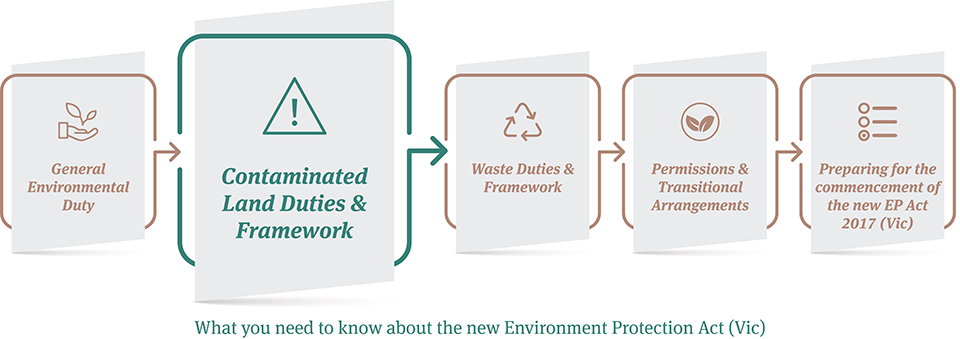
The Environment Protection Act (Vic) incorporating amendments from the Environment Protection Amendment Act 2018 (Vic) (New Act) introduces a new definition of “contamination” as well as two new duties related to contaminated land which will apply from 1 July 2021:
- A duty to manage contaminated land; and
- A duty to notify of contaminated land
(contaminated land duties)
The contaminated land duties aim to ensure people who are in management or control of contaminated land reduce the risk of harm to human health and the environment by ensuring that:
- Proactive action is taken so risks are not left unmanaged which can result in increased complexity and costs to address over time; and
- The EPA has knowledge of contaminated land that may pose a risk and potentially require EPA’s oversight /regulation.
Apart from the introduction of the contaminated land duties, the environmental audit system is changing too.
Contaminated land guide
Our comprehensive guide on contaminated land reform in Victoria provides you with our analysis and tips on:
- What is contamination?
- How to demonstrate compliance with the contaminated land duties;
- Who must comply with the contaminated land duties;
- What kinds of contamination are covered (and excluded);
- When do duty holders need to start complying with the duties;
- What recourse exists against original polluters;
- What penalties apply for non-compliance; and
- What the changes to the environmental audit system will involve.
Read our contaminated land guide here
How can you prepare for the introduction of the new contaminated land framework?
Before the contaminated land duties and audit system under the New Act commence, you can prepare by:
- Considering whether you are in management or control of contaminated land – do the duties apply to you? Are you an occupier, owner, committee of management, or a principal contractor? If so, is there more than one person in management and control?
- Reviewing historical information indicating the existence of contamination – what information do you have that might indicate your land is or potentially is, contaminated? Are there pre/post lease or sale assessment reports, assessments undertaken in the development or planning permit context or as part of EPA compliance? What do those reports tell you? Have there been changes to the land or contaminants since they were prepared? Do they reflect the current status of the land?
- Considering whether the contamination notification thresholds apply – do any contaminants on the land meet the threshold levels which trigger notification to the EPA. Do you need technical assistance in interpreting the thresholds and preparing any notification?
- Undertaking a contract review – consider whether your existing leases, licences, or works contracts need to be updated to allocate risks and responsibility for complying with the contaminated land duties. Do future agreements need to make provision for the new duties such as warranties about compliance with the notification or management requirements or undertaking exit reports?
Do you have a question, need some advice or a training workshop? Contact a member of our team.










